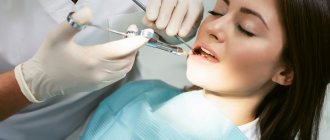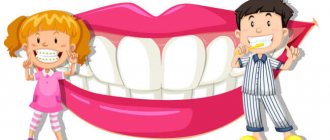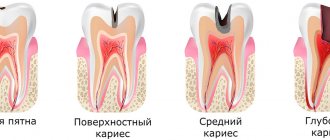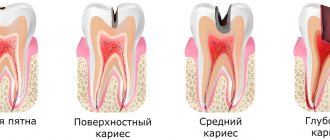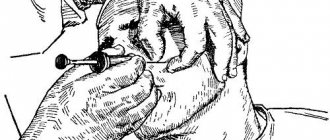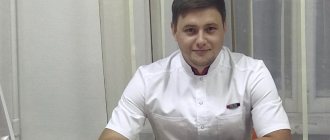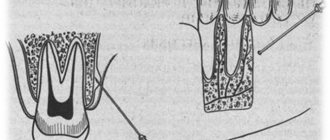Anesthesia prices Specialists
Modern anesthesia in dentistry guarantees complete pain relief during the entire treatment. Visiting a dentist at all Dental Guru clinics is absolutely comfortable. Before treatment, the desired area will be completely numbed. If you feel discomfort during the manipulations, immediately inform your doctor, and he will add anesthesia if necessary. All instruments in our clinics are sterilized in accordance with modern standards; doctors work in disposable masks and use disposable syringes.
It should be taken into account that drugs for anesthesia in dentistry differ in the content of adrenaline. And if you suffer from hypertension, high blood pressure, or various allergic reactions to any medications, please do not hesitate to inform your doctor about this in order to avoid unpleasant situations.
Types of anesthesia in dentistry
Anesthesia is divided into local and general. These types of anesthesia in dentistry are divided, in turn, into subtypes. Local anesthesia in dentistry can be application (superficial) and injection. Application anesthesia
in dentistry it is performed before an injection. This is the application of a gel, ointment or spray. The effect of such anesthesia occurs instantly, after which the injection itself is not felt.
Application anesthesia lasts up to 20 minutes and allows the hygienist, therapist or surgeon to perform simple manipulations, for example, removing tartar or suturing a gap. For superficial anesthesia in dentistry, drugs such as dicaine, lidocaine and anesthesin are used. Indications for local anesthesia in dentistry are treatment of caries, tooth extraction, oral surgery and other dental procedures.
Injection anesthesia in dentistry
There are 4 types:
- infiltration;
- conductor;
- intraligamentary (intraligamentous);
- intraosseous
Infiltration anesthesia in dentistry
used most often in the treatment of caries and tooth extraction. The doctor injects painkillers using a syringe with a thin short needle. The injected anesthetic blocks the transmission of impulses from the nerve endings of the anesthetized area.
Types of infiltration anesthesia in dentistry differ according to the area of influence: lower or upper jaw, intraligamentary, intrapapillary, subperiosteal. With intragalimentary anesthesia, an anesthetic is injected into the ligaments of the tooth. The drug is delivered under high pressure into the bone of the alveolar ridge. During intrapapillary, the drug is injected into the papilla between the teeth, and during subperiosteal, the needle enters between the base of the root and the gum.
Conduction anesthesia in dentistry
is performed by injecting an anesthetic at a distance from the desired area, thereby blocking the transmission of nerve impulses to parts of the nerve fiber. Numbs a large area with one injection of a small amount of the drug.
Types of conduction anesthesia in dentistry:
For the upper jaw, there are the following types: infraorbital (anesthesia of canines, incisors and premolars), tuberal (for molars), palatal, incisive (incisors and canines). For the lower: mandibular (the half of the jaw in which the injection is made is anesthetized), Bershe-Dubov technology (long-lasting, used for maxillofacial operations), torusal (for premolars and molars), mental (for incisors, canines and premolars).
For intragalimentary (intraligamentous) anesthesia, a special syringe is used. A small amount of painkiller is given slowly, under pressure, the number of injections corresponds to the number of tooth canals that need to be treated. Such injections are almost painless, sensitivity is eliminated instantly. Intragalimentary anesthesia acts locally, and there is no numbness of the tongue, lips and mucous membranes, and there are no problems with diction. This method is suitable for patients with cardiovascular and endocrine diseases, as well as children.
Intraosseous anesthesia is performed when treating complex teeth. The anesthetic is injected into the bone, completely removing the sensitivity of the tooth. A special syringe is used, with a rotating bur. In addition to the complex tooth, the anesthesia covers the area of two adjacent teeth, gums and roots, and “freezing” does not occur. Mainly used for complex extractions, including wisdom teeth, caries complications, restorations and periodontal surgeries.
All types of local anesthesia in dentistry are similar in the drugs used, but differ in the method of their administration (or application). Methods of local anesthesia in dentistry are selected for each patient individually, based on the time and area of exposure, as well as the specifics of the procedure being performed. The answer to the question of which anesthesia is best in your case can only be given by a qualified specialist.
Anesthetics without adrenaline
This group of anesthetics includes Scandonest and Mepivastezin (Mepivacaine).
They have a moderate vasodilator effect, so they are used without a vasoconstrictor. After administration of the drug, anesthesia occurs quickly (3–5 minutes), the effect lasts 3–40 minutes for pulp anesthesia, and up to 3 hours for soft tissue anesthesia. It is used for all types of manipulations, as well as during maxillofacial operations. Indicated for children weighing at least 15 kg.
Scandonest has the following side effects:
- headaches, dizziness;
- change in heart rate;
- allergic reactions;
- hypotension;
- disturbances in the gastrointestinal tract.
For patients with a complicated medical history, the elderly, pregnant and lactating women, the drug is prescribed with caution, as it penetrates into the blood.
It poses less danger during infiltration anesthesia (the drug is injected directly into the site of the intended manipulation).
Ultracaine (Articaine) is used for local and general anesthesia and is considered a leader.
It is reliable and is used for pain relief in children, the elderly and pregnant women.
There are 3 versions of the drug available:
- Ultracaine D, which does not contain preservatives and epinephrine;
- Ultracaine DS, with epinephrine;
- Ultracaine DS forte, with increased vasoconstrictor content.
Ubistezin is similar to Ultracain in composition and properties. Suitable for patients of all ages, except children under 4 years of age. The effect of the drug appears 1-3 minutes after injection and lasts 45-240 minutes - this depends on the type of anesthesia. The patient's health status dictates the choice of drug form.
Both drugs labeled “D” (without adrenaline) are used for the following diseases:
- bronchial asthma;
- tendency to allergies;
- thyroid diseases;
- diabetes;
- hypertension;
- cardiac decompensation.
For high blood pressure, moderate heart disease, and pregnant and nursing mothers, Ubistezin and Ultracain labeled “DS” can be used, since a low concentration of the vasoconstrictor will not cause as much harm as the penetration of the anesthetic into the blood.
General anesthesia in dentistry
Sedation is used for general anesthesia in dentistry. What it is? Sedation is a drug-induced sleep during which all reflexes are preserved, the patient can turn his head and open his mouth wider. If necessary, it can be quickly removed from this state. During sedation, a large number of teeth can be treated without discomfort. An anesthesiologist is constantly in the office; pulse, blood pressure, ECG, and blood oxygen saturation are monitored. After the operation, the patient feels only slight drowsiness and relaxation, there is no pain. This method is optimal in the presence of severe fear, hypertension, allergies to any type of anesthesia, and is suitable for children.
Heart diseases
For some heart diseases (heart rhythm disturbances, heart failure and other pathologies), specialists allow patients only anesthesia without adrenaline.
It is very important to coordinate the choice of anesthesia not only with the anesthesiologist, but also with the cardiologist. Some types of anesthesia are harmful and dangerous for heart patients.
Contraindications to anesthesia
Contraindications to local anesthesia in dentistry: allergies to any drug, cardiovascular and endocrine diseases, bronchial asthma, liver failure, taking beta-blockers, tricyclic antidepressants, mental illness, recent coronary bypass surgery, trauma to the maxillofacial area .
Temporary contraindications to dental operations under anesthesia:
- drinking alcohol on the day of surgery or the day before;
- colds;
- period of menstruation in women due to deterioration of blood clotting.
Anesthesia for bronchial asthma
in dentistry requires special knowledge and training from the doctor. This is one of the cases when safe anesthesia in dentistry is necessary.
If a patient with bronchial asthma needs dental treatment, before starting the procedures, the dentist will refer him to an allergist to clarify the status and contraindications. It is necessary to clarify what medications the client is using. In this case, before treatment, premedication is mandatory, either as prescribed by the allergist, or, in the absence of these, with Xezazal 5 mg, Zyrtec 10 mg or Kestin 10 mg 5 days before surgery, on the day of admission and 5 days after, 1 tablet 1 once a day. Immediately before dental procedures, you need to inhale a fast-acting drug from the salbutamol or fenoterol group (Ventolin, Berotec).
If an attack of suffocation develops, at the beginning of which chest pain, coughing or sneezing appears, then the inhalation shortens, the exit lengthens, wheezing is heard, the patient becomes anxious and cannot speak. The patient leans forward, rests his elbows on his knees, turns pale, sweats, and his lips turn blue. Exhalation is difficult. During an attack, the doctor should open the windows to allow fresh air in, if there is contact with the allergen, exclude it, give warm water to drink, and help inhale the medicine from the inhaler.
For bronchial asthma, an anesthetic without preservatives, for example, Ultracaine D, is best suited. Acetylsalicylic acid and other substances that provoke bronchospasm, such as morphine and indomethacin, are contraindicated.
Is it possible to increase the effectiveness of pain relief?
Much depends on the patient himself! You yourself can influence the quality of anesthesia, even in the absence of adrenaline. It is important to remember a few rules.
- Don't worry! When the patient is nervous, this negatively affects the effect of the anesthesia. You can take valerian tincture an hour before the procedure (if there are no contraindications to it). Tell your doctor before treatment that you have taken a sedative.
- Do not drink alcohol before visiting the dentist . If you have alcohol in your blood, the effect of anesthesia will be reduced.
- Tell your dentist about the medications you have been taking recently. Some of them also have a bad effect on the effect of pain relief. The procedure may have to be done later.
- If you feel unwell, temporarily reschedule treatment unless it is urgent. It is also not recommended to perform dental surgery on women during menstruation (relative contraindication).
Features of anesthesia for pregnant and nursing mothers in dentistry
Pregnant women definitely need to have their teeth treated, because caries or other inflammatory processes in this area are a threat to the health of the baby. Treatment with special anesthesia, tooth extraction, removal of plaque and stone, and rinsing according to doctor’s indications are allowed. Implantation, x-rays, the use of dental gels and ointments without medical advice, and the unauthorized use of antibiotics and painkillers without a doctor’s prescription are prohibited. Prosthetics and orthodontic treatment during pregnancy are questionable. Various complications and inflammations may occur, which are especially dangerous during this period.
The second trimester is the most favorable for dental treatment - there is no toxicosis, the formation of the main organs and systems of the fetus is behind. If you suffer from toothache, there is no need to postpone treatment at any time during pregnancy; the doctor will select a special anesthesia. Pregnant women often have gingivitis (inflammation and bleeding of the gums, severe sensitivity), which must be treated. Without treatment, the risk of premature birth increases up to 6 times. In the last trimester, dental treatment is especially dangerous; any stress can trigger labor before term.
Anesthesia in dentistry during pregnancy is characterized by the use of anesthetics without adrenaline (it can cause uterine hypertonicity). Articaine drugs are used, for example, primacaine and ultracaine. These substances do not penetrate the placenta, but at the same time they provide excellent pain relief, soothe inflammation of the oral cavity, and are hypoallergenic. Similar anesthesia in dentistry is also used during breastfeeding.
Modern drugs for anesthesia
The choice of anesthetic depends on the patient's individual treatment plan and the method of anesthesia. For local topical anesthesia, gels, ointments and sprays based on lidocaine, dicaine, bumecaine, and benzocaine are currently used. For example, diplen - LH, topex gel, disilane, diseptin, xylonor.
For injection anesthesia, drugs such as procaine, lidocaine, mepivacaine, ultracaine, ubistezin, trimecaine, articaine, chirocaine, bipuvacaine are used. Inhalational sedation uses a mixture of nitrous oxide and oxygen. If you are afraid of visiting the dentist, you can take tranquilizers orally in the form of tablets, for example, diazepam, oxazepam, hydroxyzine, hexobarbital, as prescribed by the doctor.
Electronic anesthesia in dentistry
This is a technique of anesthesia in dentistry in which the rate of administration of the anesthetic is under electronic hardware control. The anesthetic is delivered dropwise, without injury or stress, the needle moves smoothly. The advantages of using an anesthesia device in dentistry are the absence of pain, fast response (two minutes for pain relief), complete patient comfort (no discomfort before, after, or during the process), and accuracy of the injection.
Dental Guru clinics use an innovative method of computer anesthesia using the MEG-INJECT device, which allows you to accurately calculate the dose of the drug and the speed of its delivery. A thin needle ensures painless injection; application anesthesia is not required before the injection.
Anesthesia without adrenaline in dentistry
Why is adrenaline needed in painkillers? It enhances the effect of the anesthetic by constricting blood vessels and capillaries, so that the anesthetic is concentrated at the injection site. In addition, adrenaline reduces bleeding, so drugs with adrenaline are optimal for operations with large blood losses. The most commonly used drugs with adrenaline are ultracaine, ubistezin and alfacaine.
Adrenaline anesthetic will not harm a healthy person. But if you have cardiovascular diseases (heart attack in the next six months), endocrine disorders (diabetes mellitus) or pregnancy, then adrenaline should not be used. Therefore, anesthetics such as lidocaine, pyromecaine, bupivacaine, trimecaine, prilocaine, and articaine are used. Non-adrenaline anesthetics begin to act more slowly than adrenaline ones, and their effect ends faster. At the same time, the safest anesthesia in dentistry is adrenaline-free.
Why is adrenaline needed in anesthesia?
Adrenaline is a vasoconstrictor - a substance that narrows blood vessels. Therefore, on the one hand, its presence in the drug provides a longer-lasting analgesic effect, and on the other hand, it reduces the risk of bleeding during dental procedures (for example, during tooth extraction).
Given this, dentists always warn patients that anesthesia without epinephrine in dentistry has a shorter lasting effect and is not suitable for long procedures. In cases where the patient is indicated for pain relief using non-adrenaline anesthetics, treatment must be carried out very quickly or divided into stages so that the doctor has the opportunity to provide anesthesia before each subsequent stage of manipulation.
If you have a problem similar to the one described in this article, be sure to contact a specialist. Don't diagnose yourself!


